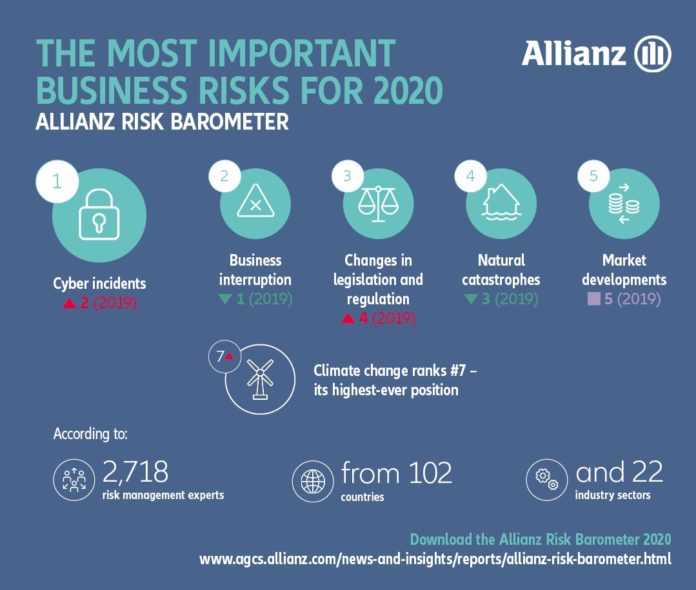Cyber incidents have for the first time outranked business interruption as the worst business risk in the Asia-Pacific region, according to the Allianz Risk Barometer 2020.
The latest annual edition covered the views of 2,718 experts in over 100 countries including CEOs, risk managers, brokers and insurance experts.
The report shows that 35% of survey responses pointed to cyber events compared to 34% for business interruption (BI), mirroring a global trend driven by companies increasing reliance on data and IT systems and a number of high-profile incidents.
It is a stark change from seven years ago when it did not even feature in the top 10 risks on the mind of risk managers regionally.
Climate change (25%) and political risks and violence (9%) are the biggest climbers regionally, underlining global warming and the business interruption that accompanies civil unrest as increasing concerns for companies and nations.
“While 2019 saw no major global cyber-incidents in the vein of past events like WannaCry and NotPetya, businesses are increasingly cognisant of the costs associated with being a victim of a cyber-attack,” said Mark Mitchell, regional CEO for Asia Pacific at Allianz Global Corproate & Security.
According to IBM, a mega data breach — involving more than one million compromised records — now costs on average $42 million, up 8% year-on-year.
“Incidents are becoming more damaging, increasingly targeting large companies with sophisticated attacks and hefty extortion demands,” said Marek Stanislawski, deputy global head of cyber at AGCS. “Five years ago, a typical ransomware demand would have been in the tens of thousands of dollars. Now they can be in the millions.”
Also, companies can suffer major BI losses due to the unavailability of critical data, systems or technology, either through a technical glitch or cyber-attack.
“Many incidents are the results of human error and can be mitigated by staff awareness trainings which are not yet a routine practice across companies,” said Stanislawski.
The trend for larger and more complex BI losses continues unabated. Causes are becoming ever more diverse, ranging from fire, explosion or natural catastrophes to digital supply chains or even political violence.
Businesses are also increasingly exposed to the direct or indirect impact of riots, civil unrest like in Hong Kong, or terrorism attacks. The consequence is a business interruption without physical losses but high financial ones.
















